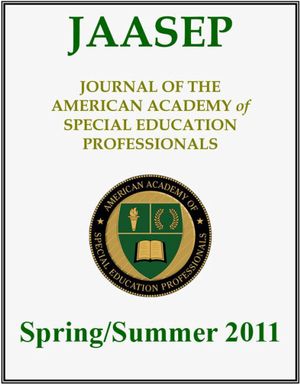Starting from:
$5.95
The Changing Role of the Itinerant Teacher of the Deaf: A Snapshot of Current Teacher Perceptions
Abstract
The past two decades have seen unprecedented changes to the field of deaf education. Several factors including technological advances and educational policy have resulted in the inclusion of the majority of students who are deaf or hard of hearing in the general education classroom with various levels of support services. Consequently, the role of the professional educator of the deaf has changed to the itinerant teaching model as the primary service delivery system in deaf education in the nation today. Because this role for teachers of the deaf is evolving, ongoing research is necessary to identify emerging trends, successes, and potential barriers to ensure effective service provision to students who are deaf or hard of hearing. This study sought to obtain a current picture of the roles and responsibilities of the itinerant teacher of the deaf (ITOD) via an electronic survey conducted through postings on a well-known professional website. Participants were 267 itinerant teachers of the deaf. Survey results support previous findings that lack of awareness of the needs of this population of students and lack of time due to increasing caseloads are barriers to service provision. Teachers reported being better prepared for the itinerant role in their preservice program than in past studies, and the use of mentorship appears to be an emerging teacher support strategy. Results supported the adequacy of the itinerant model in supporting students who are above, at, or within 6 months of grade level expectations, with increasing concerns about the ability to provide adequate levels of support to students in inclusive settings with greater educational delays via the itinerant model. Implications for these findings for the field as well as potential questions for future research on this topic are discussed.
Keywords: itinerant, deaf education, survey, service delivery model
The past two decades have seen unprecedented changes to the field of deaf education. Several factors including technological advances and educational policy have resulted in the inclusion of the majority of students who are deaf or hard of hearing in the general education classroom with various levels of support services. Consequently, the role of the professional educator of the deaf has changed to the itinerant teaching model as the primary service delivery system in deaf education in the nation today. Because this role for teachers of the deaf is evolving, ongoing research is necessary to identify emerging trends, successes, and potential barriers to ensure effective service provision to students who are deaf or hard of hearing. This study sought to obtain a current picture of the roles and responsibilities of the itinerant teacher of the deaf (ITOD) via an electronic survey conducted through postings on a well-known professional website. Participants were 267 itinerant teachers of the deaf. Survey results support previous findings that lack of awareness of the needs of this population of students and lack of time due to increasing caseloads are barriers to service provision. Teachers reported being better prepared for the itinerant role in their preservice program than in past studies, and the use of mentorship appears to be an emerging teacher support strategy. Results supported the adequacy of the itinerant model in supporting students who are above, at, or within 6 months of grade level expectations, with increasing concerns about the ability to provide adequate levels of support to students in inclusive settings with greater educational delays via the itinerant model. Implications for these findings for the field as well as potential questions for future research on this topic are discussed.
Keywords: itinerant, deaf education, survey, service delivery model
1 file (1.5MB)



